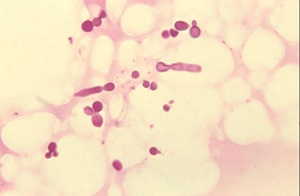
Hair Glossary
Term: Malassezia (Dandruff)
Malassezia was formerly known as Pityrosporum. It is a genus of fungi. It is the sole genus in the family Malasseziaceae, which is the only family in the order Malasseziales, itself the single member of the class Malasseziomycetes. It is directly linked to dandruff.
Pityrosporum (Malassezia) ovale, which is lipid-dependent and found only on humans. P. ovale was later divided into two species, P. ovale and P. orbiculare, but current sources consider these terms to refer to a single species of fungus, with M. furfur the preferred name.

Malassezia species are naturally found on the skin surfaces of many animals, including humans.
In occasional opportunistic infections, some species can cause hypopigmentation or hyperpigmentation on the trunk and other locations in humans.
Allergy tests for these fungi are available.
Identification of Malassezia on the skin has been aided by applying molecular or DNA-based techniques.
These investigations show that the Malassezia species causing most skin diseases in humans, including the most common cause of dandruff and seborrhoeic dermatitis, is M. globosa (though M. restricta is also involved).
The skin rash of tinea versicolor (pityriasis versicolor) is also due to infection by this fungus.


